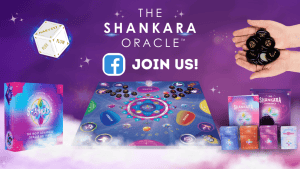
What Is Spermidine – The Longevity Compound
Spermidine, a naturally occurring polyamine, has garnered significant attention in the scientific community for its remarkable potential to enhance cellular health and longevity. Found in ribosomes and living tissues, spermidine plays a crucial role in cellular growth, proliferation, and differentiation, making it a vital component for maintaining overall health. This article delves into the science behind spermidine, its health benefits, dietary sources, and how to procure this fascinating compound.
The Science Behind Spermidine
Spermidine is a polyamine that is integral to various metabolic processes within organisms. Its primary function is to stabilize cellular structures and support cellular growth and repair. One of the most intriguing aspects of spermidine is its ability to induce autophagy, a cellular process where damaged components are removed and recycled. Autophagy is essential for cellular rejuvenation and has been linked to anti-aging benefits.
Autophagy and Longevity
Autophagy is a cellular housekeeping process that eliminates damaged organelles and proteins, thereby maintaining cellular integrity. Spermidine’s role in inducing autophagy has been demonstrated in multiple studies. Research published in the journal Nature Cell Biology highlights how spermidine supplementation extends the lifespan of model organisms, such as yeast, flies, and worms, by promoting autophagy. This process is vital for mitigating age-related cellular damage and maintaining cellular function.
Neuroprotective Properties
Spermidine’s neuroprotective properties have been the subject of extensive research. Studies suggest that spermidine can protect against neurodegenerative diseases like Alzheimer’s and Parkinson’s disease. According to a study published in Cell Reports, spermidine supplementation reduced the accumulation of toxic proteins in the brains of mice, thereby improving cognitive function and protecting neurons from degeneration.
Cardiovascular Health
Emerging evidence indicates that spermidine can support cardiovascular health. A study in The American Journal of Clinical Nutrition found that individuals with higher dietary intake of spermidine had a lower risk of cardiovascular disease. Spermidine’s ability to enhance autophagy in heart cells contributes to improved heart function and reduced risk of heart disease.
Dietary Sources of Spermidine
Spermidine is found in various foods, making it accessible through a balanced diet. Here are some of the top dietary sources:
- Wheat Germ: One of the richest sources of spermidine, wheat germ can be easily incorporated into meals.
- Soybeans: Soy products like tofu and tempeh are excellent sources of spermidine.
- Aged Cheese: Certain aged cheeses, such as cheddar and Parmesan, contain significant amounts of spermidine.
- Mushrooms: Various types of mushrooms, including shiitake and maitake, are rich in spermidine.
- Legumes and Whole Grains: Beans, lentils, and whole grains provide a good amount of spermidine.
Buying Spermidine: Tips and Recommendations
For those looking to increase their spermidine intake through supplements, here are some key considerations:
- Health Food Stores: Well-stocked health food stores often carry spermidine supplements. Check the supplements section or consult a store associate for guidance.
- Pharmacies: Larger pharmacies or those specializing in wellness products might offer spermidine supplements.
- Online Retailers: Numerous online retailers, such as Amazon and iHerb, provide a variety of spermidine supplements. Ensure to read reviews and check ratings before purchasing.
- Specialty Supplement Stores: Stores specializing in nutritional supplements, such as GNC and Vitamin Shoppe, typically have a broad range of spermidine products.
- Manufacturer Websites: Some brands sell directly through their official websites, often offering better prices or promotions. Opt for reputable brands known for high-quality supplements.
Tips for Choosing Quality Spermidine Supplements
- Check Purity and Dosage: Look for supplements that clearly state the purity and dosage of spermidine. Higher purity and appropriate dosage are crucial for effectiveness.
- Third-Party Testing: Choose products that have been third-party tested for quality and safety.
- Read Reviews: Customer reviews provide insight into the supplement’s effectiveness and any potential side effects.
- Consult a Healthcare Provider: Before starting any new supplement, consult with a healthcare provider, especially if you have underlying health conditions or are taking other medications.
Conclusion
Spermidine is a promising compound with a wealth of potential health benefits, particularly in promoting longevity and cellular health. Its ability to induce autophagy, coupled with neuroprotective and cardiovascular benefits, makes it a valuable addition to a health-conscious lifestyle. Whether obtained through diet or supplements, incorporating spermidine into your routine may support overall well-being and longevity.
For those looking to explore spermidine further, ensure to choose high-quality sources and consult with healthcare professionals to maximize the benefits of this fascinating compound.
Spermidine vs. NMN: A Comparative Analysis
Spermidine and NMN (Nicotinamide Mononucleotide) are both compounds that have garnered significant interest in the realm of longevity and cellular health. While they share some overlapping benefits, they function through different mechanisms and offer unique advantages. This comparative analysis explores the similarities and differences between spermidine and NMN, their mechanisms of action, health benefits, and sources.
Mechanisms of Action
Spermidine
Spermidine is a naturally occurring polyamine that plays a crucial role in cellular growth, proliferation, and differentiation. One of its most notable functions is the induction of autophagy, a cellular process that removes damaged components and recycles them. Autophagy is essential for maintaining cellular homeostasis and has been linked to anti-aging benefits.
- Autophagy Induction: Spermidine promotes the degradation and recycling of cellular components, which helps in mitigating age-related cellular damage.
- Stabilization of Cellular Structures: It helps stabilize cell membranes and DNA, contributing to overall cellular integrity.
NMN
NMN is a precursor to NAD+ (Nicotinamide Adenine Dinucleotide), a coenzyme that is critical for energy metabolism and cellular repair. NAD+ levels naturally decline with age, and NMN supplementation aims to boost these levels.
- NAD+ Production: NMN is converted into NAD+ in the body, which is vital for energy production in cells, particularly in the mitochondria.
- Sirtuin Activation: NAD+ activates sirtuins, a family of proteins that play a role in DNA repair, inflammation reduction, and metabolic regulation.
Health Benefits
Spermidine
- Longevity: Research indicates that spermidine supplementation can extend the lifespan of model organisms by inducing autophagy and reducing cellular damage.
- Neuroprotection: Spermidine has been shown to protect against neurodegenerative diseases like Alzheimer’s and Parkinson’s by preventing the accumulation of toxic proteins in the brain.
- Cardiovascular Health: Studies suggest that spermidine supports heart health by enhancing autophagy in heart cells and reducing the risk of heart disease.
NMN
- Energy Metabolism: By increasing NAD+ levels, NMN improves mitochondrial function and energy production, which is crucial for maintaining vitality as we age.
- DNA Repair: NMN boosts NAD+ levels, which activate sirtuins involved in DNA repair, potentially reducing the risk of age-related diseases.
- Metabolic Health: NMN supplementation has been linked to improved insulin sensitivity, reduced inflammation, and enhanced overall metabolic health.
Dietary Sources and Supplementation
Spermidine
- Dietary Sources: Spermidine is found in various foods, including wheat germ, soybeans, aged cheese, mushrooms, legumes, and whole grains.
- Supplements: Spermidine supplements are available and can be found in health food stores, pharmacies, online retailers, and specialty supplement stores.
NMN
- Dietary Sources: NMN is found in smaller amounts in foods such as broccoli, avocados, edamame, and cucumbers.
- Supplements: NMN supplements are widely available and can be purchased through health food stores, pharmacies, and online retailers.
Choosing Between Spermidine and NMN
The decision to choose between spermidine and NMN largely depends on individual health goals and specific needs:
- For Cellular Clean-up and Longevity: Spermidine is particularly effective due to its role in autophagy, making it a strong candidate for those focusing on longevity and cellular maintenance.
- For Energy Metabolism and DNA Repair: NMN is ideal for boosting NAD+ levels, enhancing energy production, and supporting DNA repair, making it suitable for those looking to improve overall metabolic health and vitality.
Conclusion
Both spermidine and NMN offer compelling benefits for promoting health and longevity, albeit through different mechanisms. Incorporating either or both into a health regimen can provide a robust approach to maintaining cellular function, preventing age-related diseases, and supporting overall well-being. As always, it is advisable to consult with a healthcare provider before starting any new supplement to ensure it aligns with individual health needs and conditions.
Get The Shankara Oracle and dramatically improve your perspective, relationships, authentic Self, and life.













